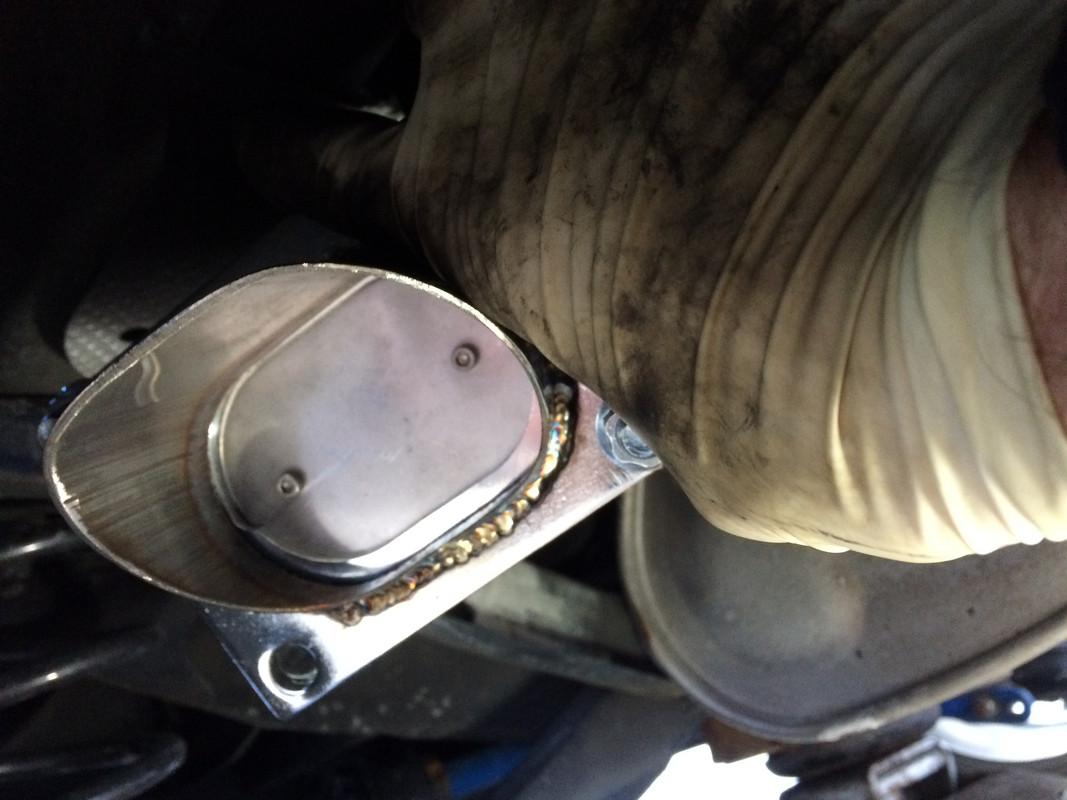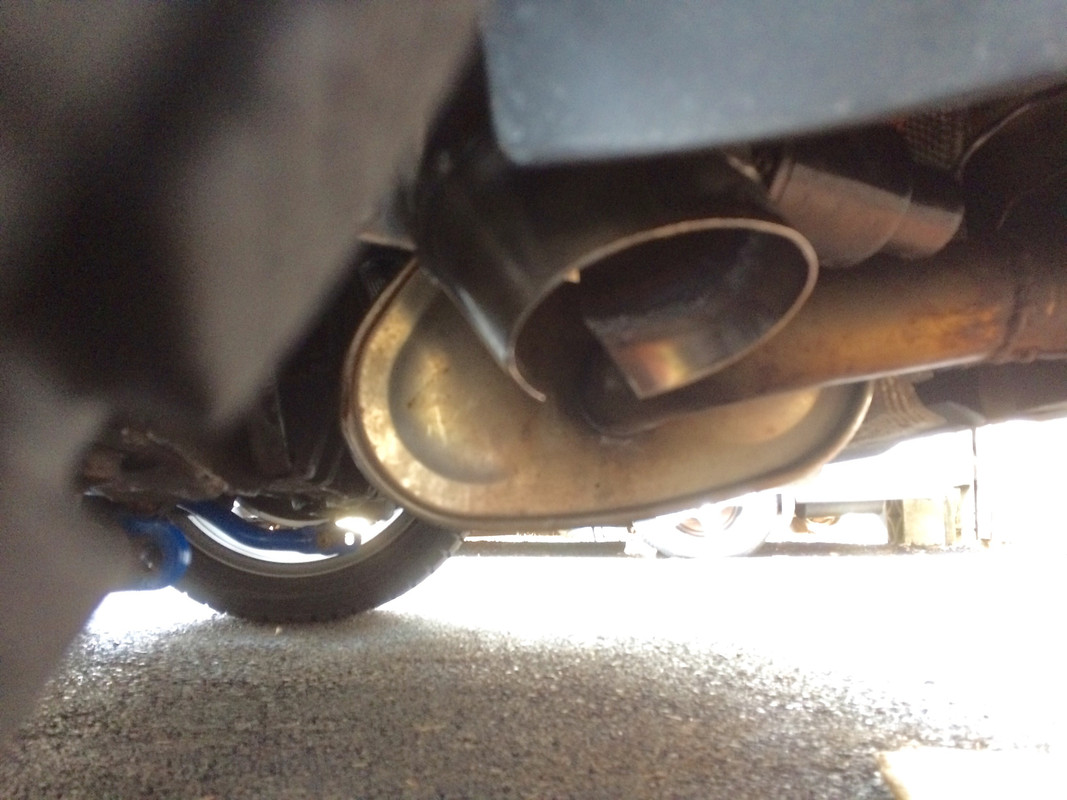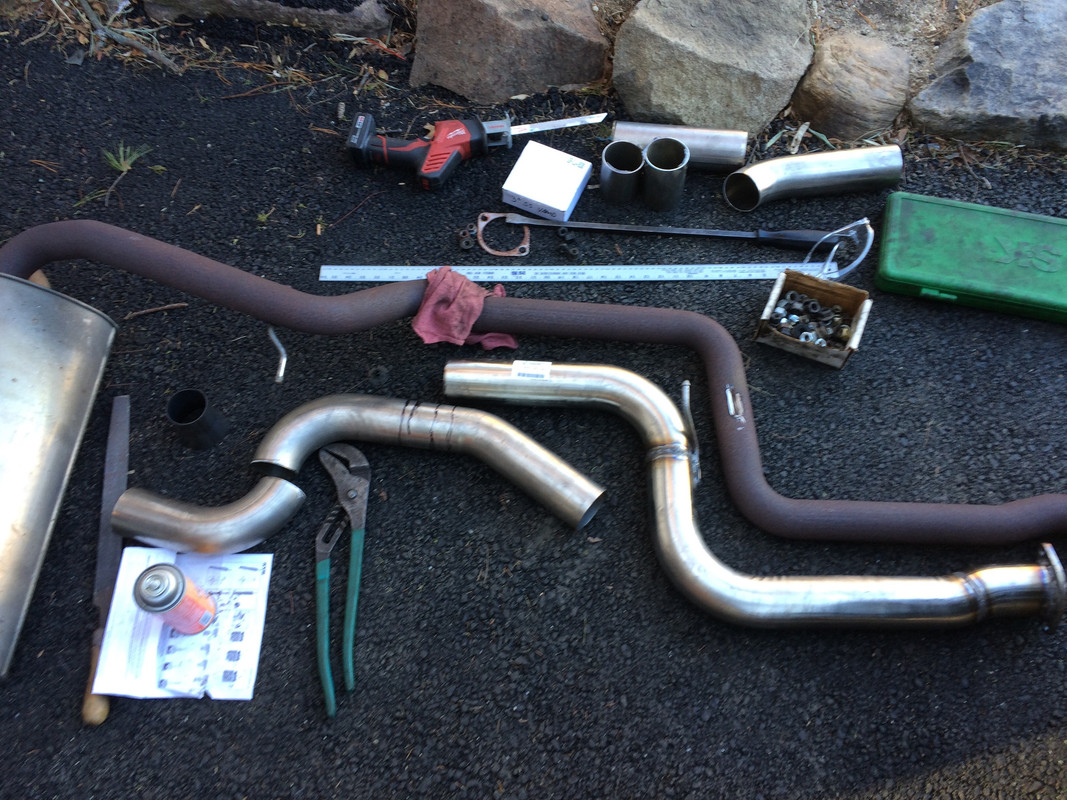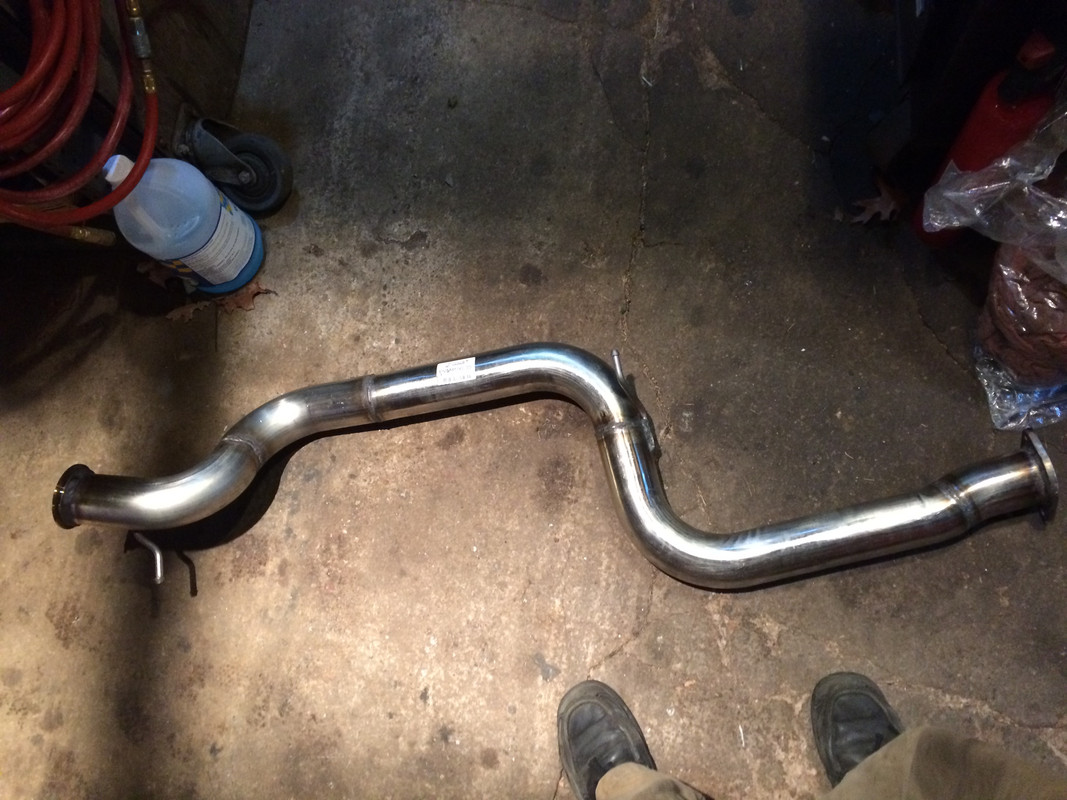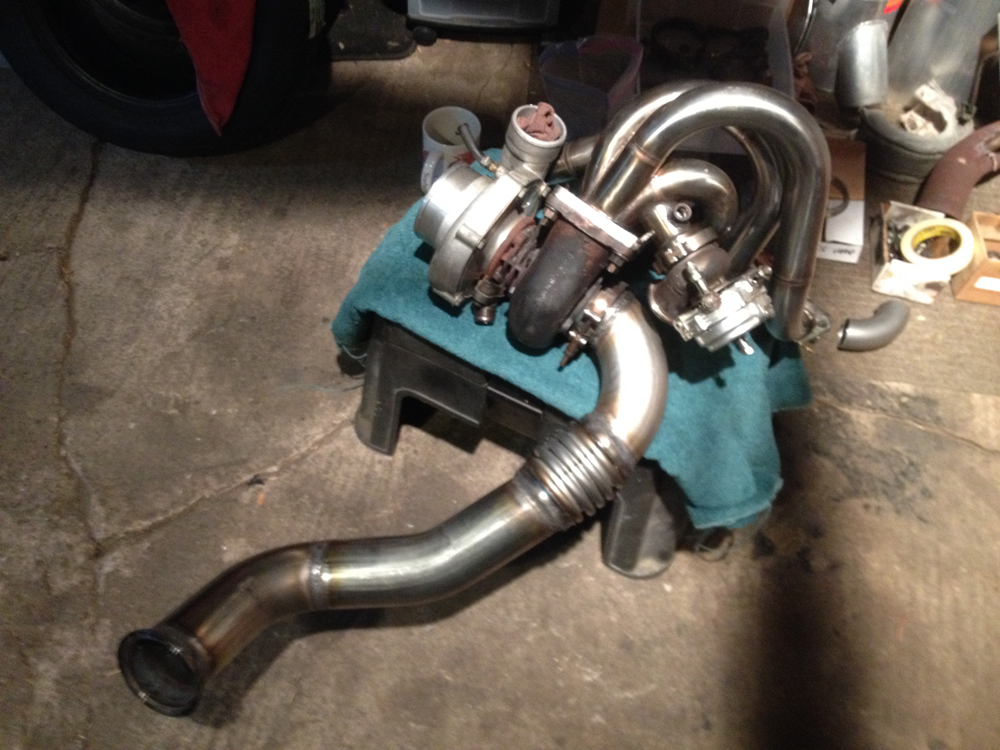lookforjoe
True Classic
Nice mockup. I'd say redo the piping in SS. Mild steel will rot from the inside out. Even though your climate may be dry, you can't remove the H2O by-product of the combustion process  That was my (costly) experience with mild steel headers.
That was my (costly) experience with mild steel headers.
On the exhaust though, I think you will find the turbo does not act as much of a muffler. Even with 2 3" magnaflow mufflers and a resonator, the drone on my old wagon setup was enough to make you feel like your ears were bleeding. I got used to it, because it sounded amazing when taken up to 9K rpm - however I'd never do it again. I built a 3" turbo-back SS exhaust with a 3" electric cutout before the single muffler on my current Volvo. I can take a sound clip if you like. There is no (meaningful) muffling from the presence of the turbo in the system.
EDIT: just re-read your last post on the exhaust, and see that you have now included a muffler in the list
On the exhaust though, I think you will find the turbo does not act as much of a muffler. Even with 2 3" magnaflow mufflers and a resonator, the drone on my old wagon setup was enough to make you feel like your ears were bleeding. I got used to it, because it sounded amazing when taken up to 9K rpm - however I'd never do it again. I built a 3" turbo-back SS exhaust with a 3" electric cutout before the single muffler on my current Volvo. I can take a sound clip if you like. There is no (meaningful) muffling from the presence of the turbo in the system.
EDIT: just re-read your last post on the exhaust, and see that you have now included a muffler in the list

